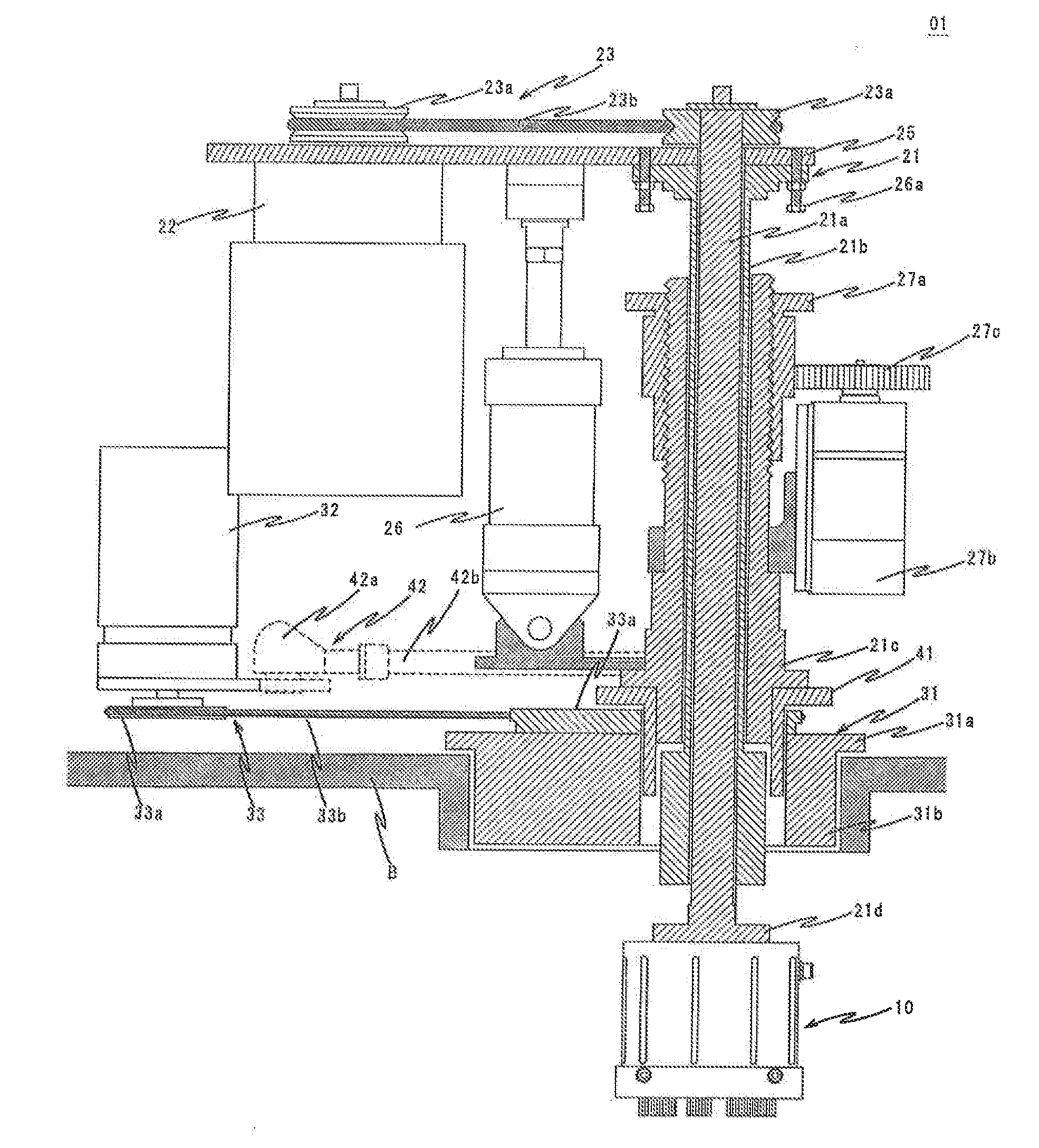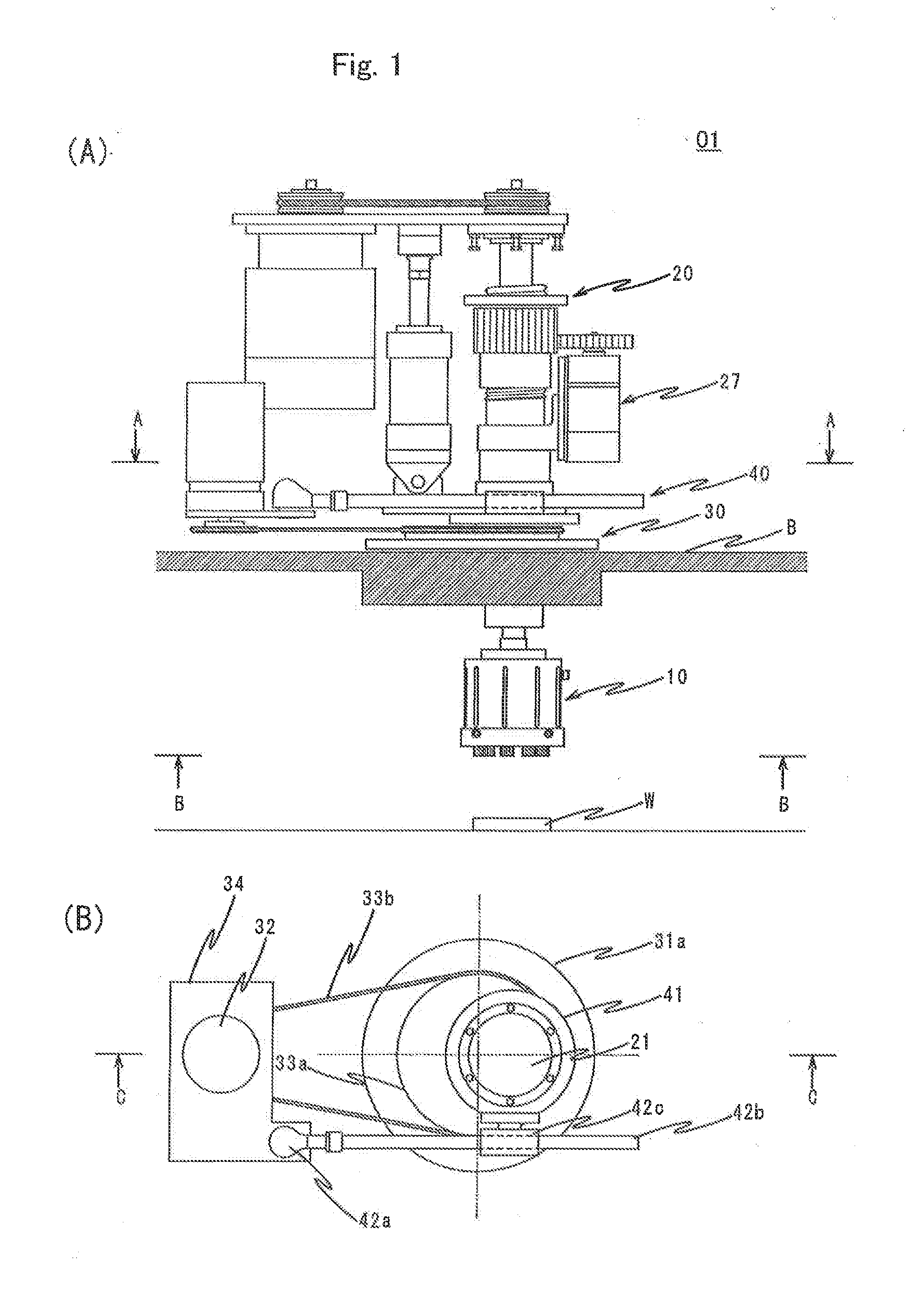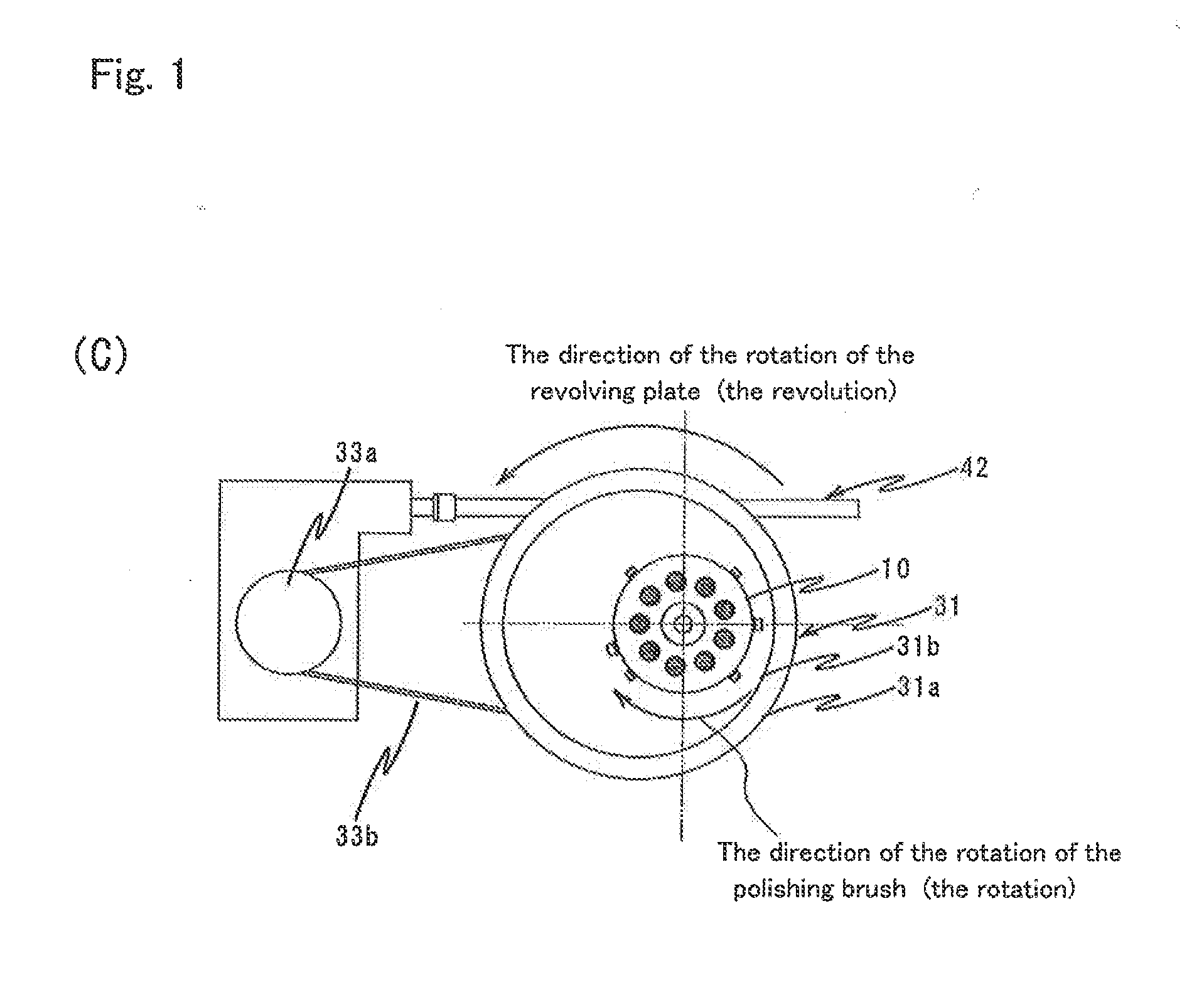A brush unit, a device for brush-polishing that uses the brush unit, a system for brush-polishing, and a method for brush-polishing
a brush unit and brush technology, applied in the direction of grinding drives, grinding heads, manufacturing tools, etc., can solve the problems of large power, large brush unit, and possible problems, and achieve the effect of reducing the trouble caused to the brush unit by an overload
- Summary
- Abstract
- Description
- Claims
- Application Information
AI Technical Summary
Benefits of technology
Problems solved by technology
Method used
Image
Examples
first embodiment
A Brush Unit of a First Embodiment
[0032]As in FIGS. 1 to 4, the brush unit 01 of a first embodiment comprises a polishing brush 10, a rotating unit 20, a revolving unit 30, and a connecting unit 40.
[0033]The rotating unit 20 has a mechanism 21 for rotation that is connected to the polishing brush 10, a mechanism 22 for driving the rotation that generates a force for the driving (a force for the rotating) for rotating (for example, horizontally rotating) the polishing brush 10, a mechanism 23 for transmitting the force for the rotation that transmits the force for the rotating to the mechanism 21 for rotation, and a mechanism 26 for vertically moving that lowers the polishing brush 10 toward a workpiece W.
[0034]As in FIG. 2, the mechanism 21 for rotation has a rotating shaft 21a that is approximately a cylindrical column, a sliding shaft 21b that is approximately cylindrical and receives the rotating shaft 21a so that it can be rotated, and a holder for rotation 21c that has a cylind...
second embodiment
A Brush Unit of a Second Embodiment
[0058]Next, with reference to FIGS. 5, 6, and 7, a brush unit 51 of a second embodiment is discussed. The configuration of the second embodiment is the same as that of the first embodiment, unless otherwise indicated.
[0059]As in FIG. 5(A), the brush unit 51 of the second embodiment comprises multiple polishing brushes 60 (four brushes in the present embodiment), a rotating unit 70, a revolving unit 80, and a rack 90.
[0060]The configuration of the polishing brushes 60 is the same as that of the polishing brush 10 of the first embodiment, though there are some differences in the designs, such as their sizes and the number of polishing tools.
[0061]As in FIG. 6, the rotating unit 70 comprises a mechanism 71 for rotation, a mechanism 72 for driving the rotation, a mechanism 73 for transmitting the force for the rotation, a secondary mechanism 74 for transmitting the force for the rotation, and a mechanism 76 for vertically moving. The mechanism 71 for r...
working examples
[0125]The brush unit of the first embodiment and that of the second embodiment are attached to the conveyor-type device for brush-polishing so that the workpieces are polished in various conditions. The results are discussed as working examples. The valve plate that is shown in FIG. 7 and made of steel is used as the workpiece. It is a circular plate 100 mm in diameter and 3.5 mm thick. Ten large holes H1 (10 mm in diameter) or nine small holes H2 (4 mm in diameter) are formed by machining. The corners on both surfaces of these holes are rounded to have r=10-100 μm (R beveling process).
[0126]The workpieces W after being polished are observed by a microscope (KH-3000, available from Hirox, Japan) to evaluate the capabilities to remove burrs, as follows:
[0127]Good: No burrs on any holes
[0128]N.G.: Burrs remain on some holes
[0129]The capabilities to round corners are evaluated by using a contour measuring instrument (2600E, available from Tokyo Seimitsu, Japan) as follows:
[0130]Excelle...
PUM
| Property | Measurement | Unit |
|---|---|---|
| diameters | aaaaa | aaaaa |
| diameter | aaaaa | aaaaa |
| diameter | aaaaa | aaaaa |
Abstract
Description
Claims
Application Information
 Login to View More
Login to View More - R&D
- Intellectual Property
- Life Sciences
- Materials
- Tech Scout
- Unparalleled Data Quality
- Higher Quality Content
- 60% Fewer Hallucinations
Browse by: Latest US Patents, China's latest patents, Technical Efficacy Thesaurus, Application Domain, Technology Topic, Popular Technical Reports.
© 2025 PatSnap. All rights reserved.Legal|Privacy policy|Modern Slavery Act Transparency Statement|Sitemap|About US| Contact US: help@patsnap.com



